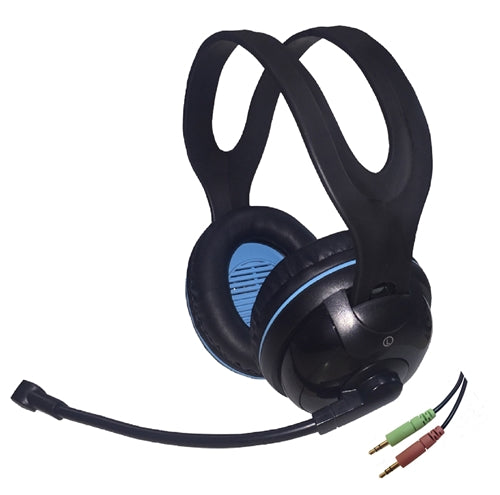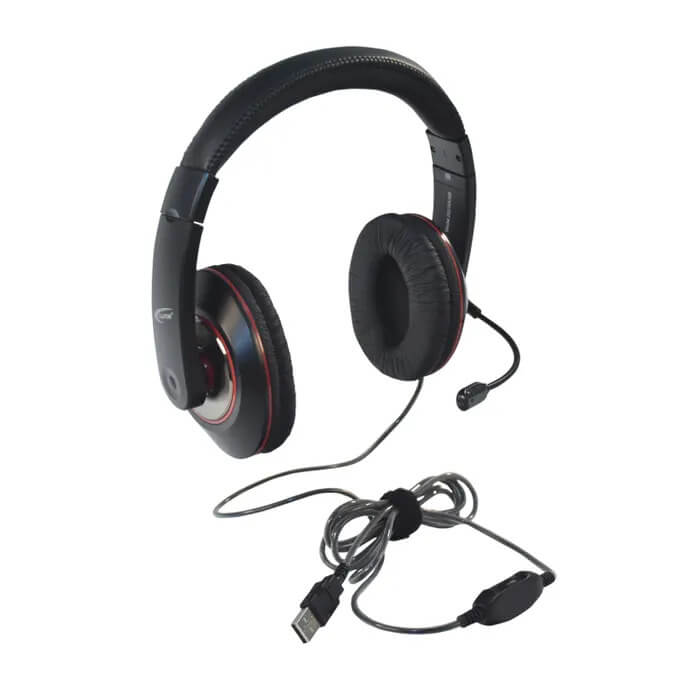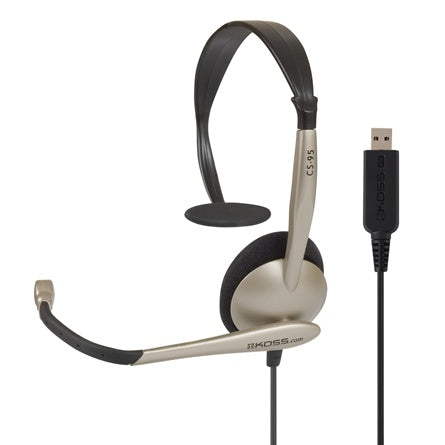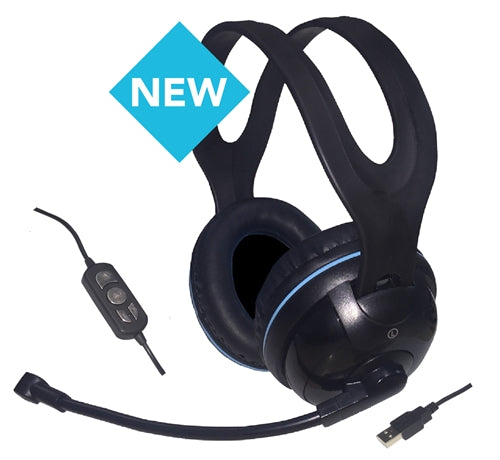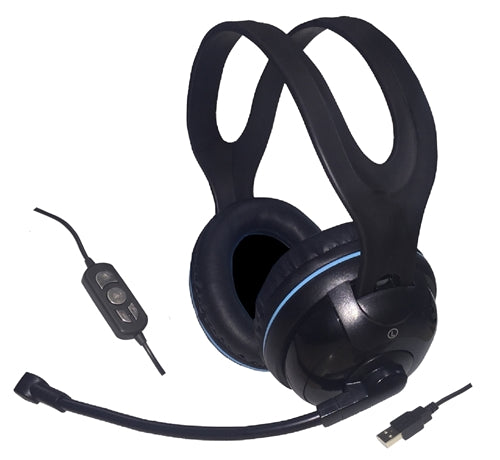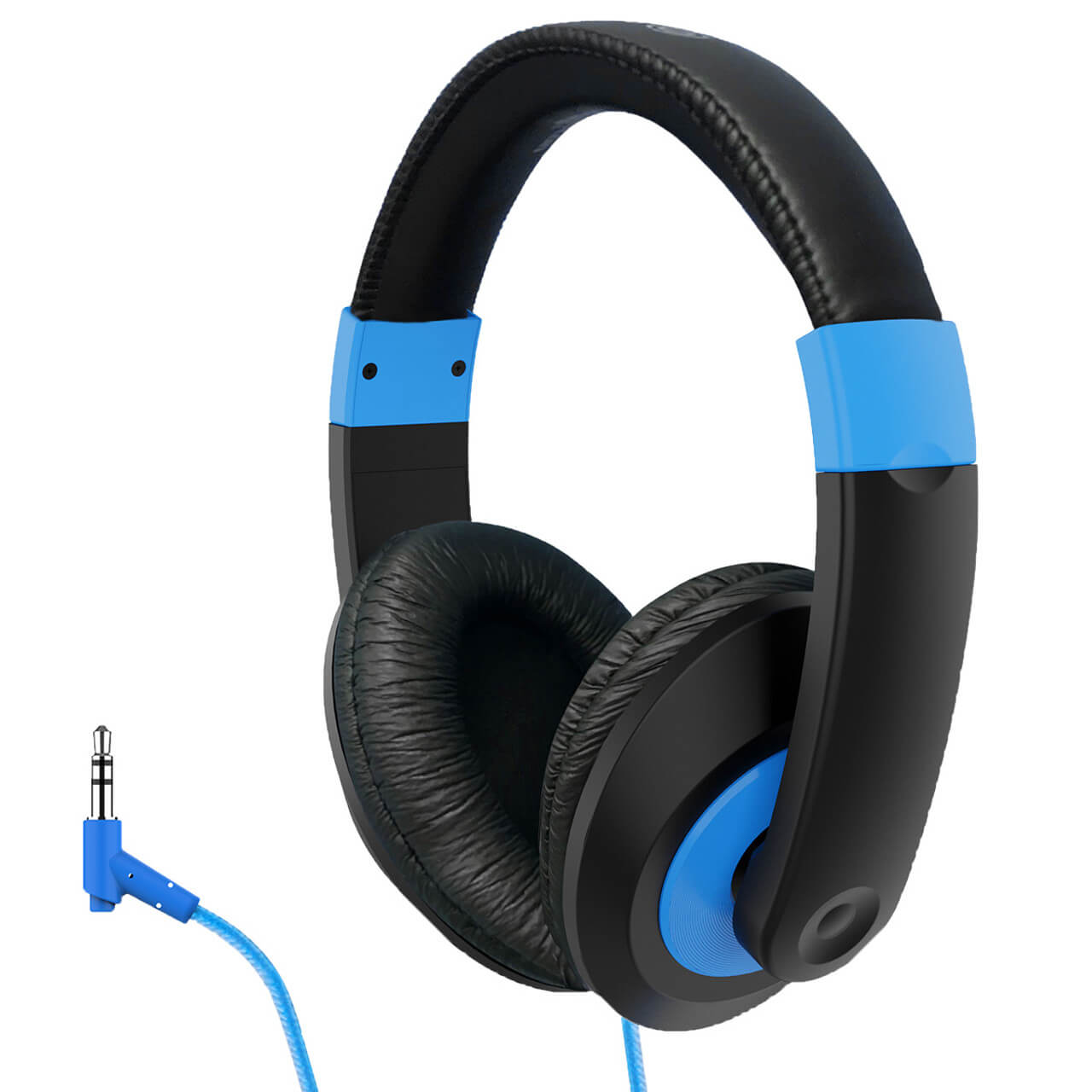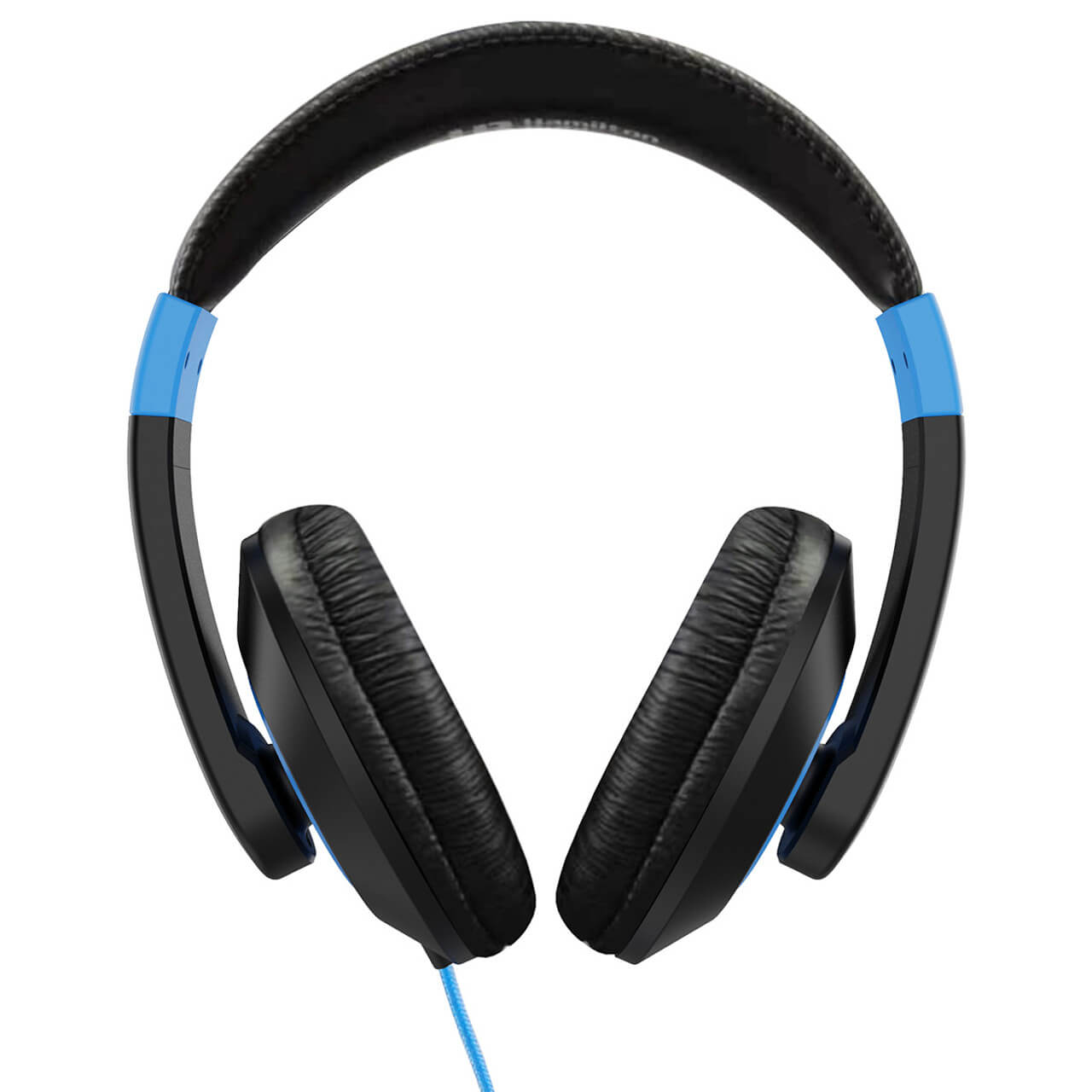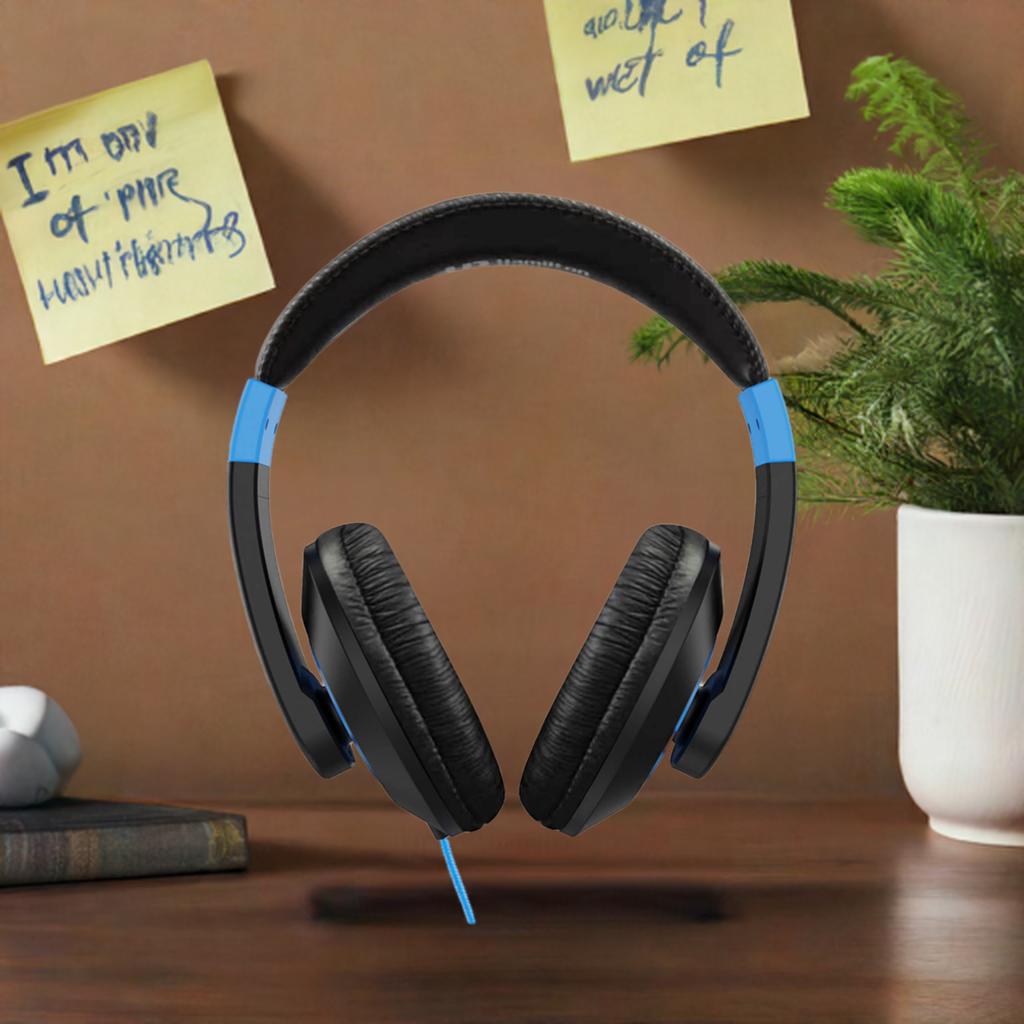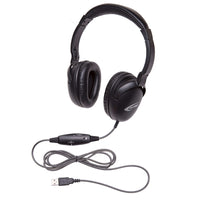Key Takeaways: Best USB School Headsets of 2025
- USB headsets offer plug-and-play functionality with better digital sound processing
- 3.5mm headsets provide broader device compatibility across various educational technologies
- USB connections eliminate the need for sound card troubleshooting in computer labs
- Budget-conscious schools may prefer 3.5mm options for their universal compatibility
- Consider device ecosystem, durability, and specific educational applications when choosing
- Digital audio processing in USB models provides superior noise cancellation for focused learning
- 3.5mm options work seamlessly across tablets, smartphones, and traditional computers
- Higher-quality USB headsets often have longer lifespans, potentially offsetting initial costs
- Volume purchasing options can significantly reduce per-unit costs for larger deployments
- Proper storage and maintenance protocols can extend headset lifespan by 50% or more
Introduction: Understanding the USB vs. 3.5mm Decision for Educational Headsets
Selecting the right headsets for educational environments requires balancing technology compatibility, durability, and budget considerations. The connection type—USB or 3.5mm—represents one of the most critical decisions schools must make when investing in audio equipment for classrooms, language labs, and testing centers. This choice affects not only sound quality but also compatibility with existing technology and future-proofing your audio investment. The implications of this decision extend beyond simple connectivity to impact overall learning experiences, technical support requirements, and long-term total cost of ownership for educational institutions.
At Learning Headphones, we understand that educational technology decisions impact student learning experiences directly. This comprehensive guide examines the key differences between USB and 3.5mm headset options, helping education technology coordinators, teachers, and administrators make informed decisions for their specific learning environments. With over a decade of experience providing audio solutions to schools nationwide, our expertise can help you make this important technology decision.
Both connection types offer distinct advantages depending on your educational setting, device ecosystem, and budget constraints. We'll explore the technical differences, practical applications, and provide specific product recommendations to help you choose the right option for your school's audio needs. Understanding these differences is essential as schools increasingly rely on digital learning tools, online assessments, and multimedia educational content that require reliable audio solutions for effective implementation.
USB School Headsets: Digital Advantages for Modern Classrooms
USB headsets have become increasingly popular in educational settings due to their digital connectivity advantages and enhanced audio processing capabilities. These headsets connect directly to computers via USB ports, bypassing the computer's sound card and providing consistent audio quality regardless of the host device's audio hardware. This makes them particularly valuable in computer labs where hardware may vary significantly between machines. The digital signal processing capabilities built into USB headsets often result in clearer audio reproduction and superior noise cancellation, creating a more focused learning environment even in busy classroom settings.
Key Benefits of USB School Headsets
USB headsets offer several significant advantages for educational environments, making them ideal for specific learning scenarios. The digital connection provides clearer audio processing, which is especially important for language learning and speech recognition applications where sound quality directly impacts learning outcomes. This enhanced clarity can make a substantial difference in students' ability to distinguish subtle phonetic differences when learning new languages or developing proper pronunciation skills.
The direct digital connection means that USB headsets process audio digitally, often resulting in clearer sound and better noise cancellation for both listening and speaking. This is particularly valuable in busy classroom environments where background noise can interfere with learning. The digital signal processing can filter out ambient classroom noise, allowing students to focus more effectively on their audio content without distractions. Additionally, most USB headsets work immediately when connected, eliminating the need for additional drivers or configuration in many cases, which saves valuable class time and reduces technical support requirements.
Teacher Review: "The USB headsets in our language lab have dramatically improved our students' pronunciation practice. The clear audio and noise cancellation help students focus on the nuances of language without distractions. We've seen a marked improvement in pronunciation accuracy since upgrading from our older analog headsets, especially for students working on challenging phonemes in foreign language studies."
— Maria C., High School Language Teacher
Top USB School Headsets for 2025
Our collection of USB school headphones includes several standout models that have proven their value in educational settings. These models offer the perfect balance of durability, comfort, and audio quality for classroom environments. Each has been field-tested in actual educational settings to ensure they meet the demanding requirements of daily school use while providing the audio quality necessary for effective learning.
1. Califone 2021MUSB Deluxe Stereo Headset
The Califone 2021MUSB features an ambidextrous gooseneck microphone that can be positioned optimally for clear speech capture. Its robust construction makes it ideal for daily classroom use, while the USB connection ensures consistent audio quality across different computer setups. The flexible design allows students to position the microphone for optimal voice capture, which is particularly valuable for language learning applications. The reinforced strain relief on the cable entry points significantly reduces one of the most common failure points in educational headsets, extending the product's usable life in demanding classroom environments.
2. USB Stereo Headset with In-line Volume Control (NC-255VM USB)
This on-ear stereo headset delivers premium sound quality and clear communication for both PC and Mac environments. The in-line volume control allows students to adjust audio levels without disrupting software settings, making it perfect for mixed-ability classrooms where individual volume needs may vary. The comfortable on-ear design makes it suitable for extended wear during longer learning sessions. The leatherette ear cushions provide both comfort and noise isolation while being easy to clean and sanitize between uses, an important consideration for shared equipment in educational settings.
3. USB Over-Ear Stereo Headset (NC-455VM USB)
Available for $49.95, this over-ear model provides enhanced noise isolation for focused learning environments. The over-ear design completely surrounds the ears, blocking out more ambient classroom noise and helping students concentrate on their audio content. This makes it particularly valuable for testing environments or language labs where external distractions need to be minimized. The adjustable headband accommodates various head sizes comfortably, while the unidirectional microphone focuses on capturing the user's voice while reducing background classroom noise, resulting in clearer audio recordings and better speech recognition performance.
Best of 2025: USB School Headset
Our top recommendation for 2025: The NC-455VM USB Over-Ear Stereo Headset combines superior sound isolation, exceptional microphone clarity, and robust construction—making it our top choice for schools investing in USB audio technology this year.
With its over-ear design providing better focus for students and premium digital audio processing, this model delivers the best overall experience for computer-based learning activities. The combination of comfort for extended wear periods, excellent audio quality, and durability under daily classroom use makes this headset an exceptional value despite its slightly higher price point.
3.5mm School Headsets: Versatility for Multi-Device Environments
While USB headsets offer digital advantages, traditional 3.5mm headsets remain a popular choice for many educational settings due to their universal compatibility and versatility across different devices. The standard 3.5mm audio jack is found on nearly all electronic devices, from computers and tablets to smartphones and specialized educational equipment, making these headsets incredibly flexible for schools with diverse technology ecosystems. This universal compatibility is particularly valuable in educational environments where students might need to connect to different devices throughout the school day or where technology resources vary between classrooms.
Key Benefits of 3.5mm School Headsets
The greatest strength of 3.5mm headsets lies in their compatibility and simplicity. These headsets work with virtually any device with a standard headphone jack, including computers, tablets, smartphones, and specialized educational equipment. This universal compatibility makes them ideal for schools with mixed device environments or those that frequently update their technology. Schools implementing BYOD (Bring Your Own Device) programs find 3.5mm headsets particularly valuable as they can connect to virtually any student-owned device without compatibility concerns.
Another significant advantage is that 3.5mm headsets require no special software or drivers, making them truly plug-and-play across all devices. This simplicity reduces technical support needs and ensures students can quickly connect and begin working without configuration delays. For schools with limited IT support resources, this simplicity can be a major benefit. Additionally, 3.5mm headsets typically cost less than their USB counterparts, allowing schools to equip more students within the same budget constraints or allocate resources to other educational technology needs.
IT Administrator Review: "We chose 3.5mm headsets for our elementary schools because they work seamlessly across our mix of iPads, Chromebooks, and desktop computers. The simplicity means fewer support tickets and more learning time. When students move between different learning stations throughout the day, they can take their headsets with them and connect to any device without compatibility issues or configuration delays."
— Robert T., District Technology Coordinator
Top 3.5mm School Headsets for 2025
Our selection of 3.5mm headsets includes several models that excel in educational environments, offering the perfect balance of durability, comfort, and value. These models have been carefully selected based on feedback from educators and performance in actual classroom conditions to ensure they meet the demanding requirements of daily educational use.
1. Advanced School Headset
Priced at $13.95, this headset represents excellent value for schools needing reliable audio solutions. The Advanced School Headset features universal compatibility with all standard 3.5mm audio jacks, making it perfect for mixed-device classrooms. Its durable, chew-resistant cord stands up to the rigors of daily classroom use, while the comfortable design is suitable for students of all ages, from elementary through high school. The adjustable headband accommodates different head sizes, ensuring a comfortable fit for students of varying ages, while the cushioned ear pads provide comfort during extended learning sessions without causing ear fatigue.
2. TRRS School Headset with In-Line Microphone
At $15.99, this TRRS headset is designed specifically for modern educational devices. The TRRS (Tip-Ring-Ring-Sleeve) connector combines audio output and microphone input in a single plug, making it compatible with tablets, smartphones, and newer computers that use a combined audio jack. The in-line microphone placement keeps it positioned optimally for clear voice capture without requiring adjustment, which is particularly helpful for younger students. This design eliminates the need for a separate microphone boom, reducing potential breakage points while still providing clear voice recording capabilities for language learning, video conferencing, and multimedia projects.
3. Smart-Trek™ Deluxe Headphones with Blue Accents
Currently on sale for $13.99 (regularly $22.99), these stylish headphones offer durability and comfort at an affordable price. The blue accents add a visual appeal that students appreciate, while the high-quality ear cushions provide comfort for extended wearing sessions. The adjustable headband accommodates different head sizes, making these headphones suitable for students from elementary through high school. The reinforced cable connection points reduce strain at common breakage locations, extending the product's lifespan in busy classroom environments where proper handling may not always be observed.
Best of 2025: 3.5mm School Headset
Our top recommendation for 2025: The Advanced School Headset offers the best balance of quality, durability, and value for schools requiring 3.5mm connectivity. Its versatility across different devices and comfortable design make it our top choice in this category.
For schools with mixed device environments including tablets, Chromebooks, and traditional computers, this headset provides consistent performance at a price point that works for most educational budgets. The combination of universal compatibility, comfortable fit for extended use, and robust construction designed specifically for classroom environments makes this our standout recommendation for 3.5mm connectivity in 2025.
Comprehensive Comparison: USB vs. 3.5mm School Headsets
To help you make an informed decision for your educational environment, we've created this detailed comparison table highlighting the key differences between USB and 3.5mm headsets. Understanding these distinctions will help you determine which option best meets your specific classroom needs and technology infrastructure. Each factor should be weighed according to your particular educational requirements, budget constraints, and existing technology ecosystem to find the optimal solution for your students.
| Feature | USB School Headsets | 3.5mm School Headsets |
|---|---|---|
| Connection Type | Digital USB connection | Analog 3.5mm audio jack |
| Device Compatibility | Computers with USB ports | Any device with standard audio jack |
| Audio Quality | Digital processing, typically clearer | Depends on device's sound card |
| Microphone Quality | Often superior with digital processing | Variable based on device |
| Setup Complexity | May require drivers on some systems | Simple plug-and-play |
| Price Range | $25-55 for quality models | $7-25 for comparable quality |
| Best For | Computer labs, language learning, speech recognition | Mixed device environments, younger students, budget constraints |
| Volume Controls | Often integrated at hardware level | Typically controlled by host device |
| Durability | Comparable across price points | Comparable across price points |
Choosing the Right Headset for Specific Educational Applications
Different educational activities may benefit from specific headset features. The right choice depends on your primary instructional goals and the technological ecosystem of your school. Here's guidance for selecting the appropriate headset type based on common educational applications. By matching headset capabilities to specific learning activities, you can optimize both the educational experience and your technology investment.
Language Learning and Speech Recognition
For activities focusing on pronunciation, language acquisition, and speech recognition software, we recommend USB headsets with high-quality microphones and digital signal processing. The NC-455VM USB Over-Ear Stereo Headset provides excellent noise isolation and microphone clarity, making it ideal for these applications. The digital processing ensures that subtle pronunciation differences are captured accurately, which is essential for effective language learning. The improved audio quality helps students distinguish between similar phonemes and develop more accurate pronunciation, while the noise-cancelling capabilities ensure that speech recognition software receives clear input even in busy classroom environments.
Standardized Testing and Assessment
For testing environments, reliability and simplicity are paramount. Both USB and 3.5mm options can work well, depending on the testing platform. For computer-based tests, the Califone 1017IMUSB Stereo Headset provides dependable performance with clear audio delivery. The digital connection ensures consistent sound quality across different testing stations, which is crucial for standardized assessment. The reliability of digital processing helps eliminate variables that could affect test performance, ensuring all students receive the same audio quality regardless of their assigned computer.
For mixed device testing or situations where students might use tablets or other devices, the Advanced School Headset offers versatile compatibility that works across platforms. Its simple connection makes it quick to set up and reduces technical issues during high-stakes testing sessions. The universal compatibility ensures that regardless of the testing platform or device, students can connect quickly and begin their assessments without technical delays that could impact performance or increase test anxiety.
Elementary Classrooms
Younger students benefit from durable, simple-to-use headsets with comfortable fit and easy adjustability. The Smart-Trek™ Deluxe Headphones provide excellent durability and comfort at an affordable price point, making them ideal for elementary settings. Their adjustable headband accommodates smaller head sizes, while the robust construction withstands the handling typical of younger students. The simplified design minimizes potential failure points, reducing replacement needs and extending the useful life of the equipment even in the hands of less careful users.
Computer Labs and Media Centers
For dedicated computer environments where consistent audio experience is important, USB headsets provide advantages through their digital processing capabilities. The NC-255VM USB Stereo Headset offers excellent value for computer lab settings with its in-line volume controls and comfortable design. The individual volume controls allow students to adjust audio levels without changing system settings, which is particularly valuable in shared computer environments. This prevents students from altering system-wide audio settings that might affect subsequent users, reducing configuration issues and ensuring a consistent experience for all students using the same workstation throughout the day.
Remote and Hybrid Learning
For students participating in remote or hybrid learning, microphone quality becomes especially important for clear communication. USB headsets like the USB Headset with Noise Cancelling Mic provide superior audio capture for virtual classroom participation. The noise-cancelling technology helps filter out household background noise, ensuring that the student's voice comes through clearly during online discussions and presentations. This clarity is essential for effective participation in virtual learning environments, where audio quality directly impacts a student's ability to engage with teachers and peers in meaningful educational interactions.
Budget Considerations and Volume Purchasing
Educational technology purchases often require balancing quality with budget constraints, especially when purchasing in volume for entire classrooms or schools. Understanding the total cost of ownership, including replacement rates and maintenance needs, can help schools make more economical decisions in the long run. While initial purchase price is an important factor, considering durability, replacement frequency, and administrative overhead for managing equipment can provide a more accurate picture of the true cost of headset deployment in educational environments.
Cost-Effective Strategies
When equipping classrooms with headsets, consider implementing a tiered deployment approach. This strategy involves using higher-end USB headsets for specialized applications like language labs or speech therapy, while deploying more economical 3.5mm models for general classroom use. This targeted approach ensures that you're investing in advanced features only where they provide the most educational benefit. By allocating resources strategically based on specific learning needs rather than applying a one-size-fits-all approach, schools can maximize the impact of their audio technology budget while still meeting diverse educational requirements.
Volume discounts are available for larger orders through our bulk purchasing program, potentially making higher-quality headsets more affordable when purchased in classroom quantities. These discounts can significantly reduce the per-unit cost, allowing schools to upgrade to better models within the same budget constraints. For district-wide deployments, custom pricing packages can provide substantial savings while ensuring consistent equipment across multiple schools, simplifying maintenance, support, and replacement processes for IT departments managing large-scale audio equipment deployments.
Administrator Review: "We initially balked at the higher cost of USB headsets, but after calculating replacement costs for cheaper models that didn't last, we found the total cost of ownership was actually lower with quality USB models for our computer labs. The reduced IT support requirements and longer lifespan more than compensated for the higher initial investment, and student learning experiences improved significantly with the better audio quality."
— James K., School Principal
Volume Purchasing Options
For schools and districts looking to equip multiple classrooms, we offer special volume pricing and procurement assistance. Our education specialists can help develop a customized headset solution that addresses your specific needs while working within budgetary constraints. This consultative approach ensures you're getting the right mix of products for your educational environment rather than a one-size-fits-all solution. We can analyze your specific use cases, device ecosystem, and budgetary parameters to recommend the optimal combination of headset types and models to maximize educational outcomes while minimizing total cost of ownership.
Maintenance and Longevity: Getting the Most from Your Investment
Regardless of whether you choose USB or 3.5mm headsets, proper maintenance can significantly extend their useful life in educational settings. Implementing good care practices and teaching students proper handling techniques can dramatically reduce replacement costs over time and ensure consistent audio quality throughout the school year. Educational environments are particularly demanding on equipment, with multiple users handling the same devices daily, so establishing clear protocols for use, storage, and cleaning is essential for maximizing the return on your audio technology investment.
Maintenance Best Practices
One of the most effective ways to extend headset life is implementing proper storage systems like hooks, racks, or storage bags to prevent tangled cords and headband stress. These simple organizational tools can prevent many common damage issues that occur when headsets are haphazardly stored between uses. Dedicated storage solutions not only protect the physical integrity of the headsets but also help establish accountability among students for proper equipment care. Numbering headsets and assigning them consistently to the same students or workstations can further increase care and reduce anonymous mishandling that often leads to premature equipment failure.
Taking time to teach students proper handling, storage, and care techniques can significantly minimize accidental damage. Even brief training at the beginning of the year on how to put on, remove, and store headsets can dramatically reduce breakage rates. For USB headsets in particular, proper cable management can prevent connector damage and extend the life of the equipment. Simple practices like teaching students to disconnect by gripping the plug rather than pulling the cable can prevent many common failures. Establishing clear expectations and procedures for headset use creates a culture of responsibility that benefits both the equipment lifespan and students' development of proper technology stewardship skills.
Conclusion: Making the Right Choice for Your Educational Environment
When deciding between USB and 3.5mm headsets for educational use, there's no one-size-fits-all answer. The right choice depends on your specific technology environment, educational applications, and budget considerations. By carefully evaluating your needs and understanding the strengths of each option, you can make an informed decision that enhances learning outcomes while maximizing your technology investment. Consider not only the immediate requirements but also how your audio needs might evolve as your educational technology ecosystem develops over time.
USB Headsets Are Ideal When:
Choose USB headsets when your environment is primarily computer-based with available USB ports. These headsets excel in situations where audio quality and microphone clarity are top priorities, such as language learning or speech-recognition applications. The digital connection ensures consistent performance across different computer models, which is particularly valuable in lab settings with varied equipment. While USB headsets typically require a slightly higher investment, the digital features and enhanced audio processing often justify the additional cost for specialized educational applications. The improved audio quality can make a significant difference in learning outcomes for activities where clear communication and precise audio reproduction are essential components of the educational experience.
3.5mm Headsets Are Preferable When:
Opt for 3.5mm headsets when your environment includes tablets, smartphones, and various device types. These headsets provide maximum compatibility across different hardware, making them ideal for mixed-device classrooms or BYOD (bring your own device) environments. Their generally more economical price point makes them attractive when budget constraints are a primary concern. The simplicity of connection and troubleshooting makes 3.5mm headsets particularly suitable for younger students or classrooms with limited technical support. The versatility of 3.5mm connections allows for seamless transitions between different learning stations and devices throughout the school day, providing flexibility that can be essential in dynamic educational environments.
At Learning Headphones, we're committed to helping educational institutions find the perfect audio solutions for their unique needs. Our team of education technology specialists is available to provide personalized recommendations based on your specific requirements and constraints. With years of experience serving schools nationwide, we understand the challenges and opportunities in educational audio technology and can guide you toward solutions that enhance learning while respecting budgetary realities.
Whether you choose USB or 3.5mm headsets, investing in quality audio equipment for educational environments enhances learning experiences, improves engagement, and provides students with the tools they need to succeed in today's technology-rich educational landscape. The right headsets can transform digital learning experiences, enabling clear communication, focused attention, and effective participation in the diverse audio-based activities that form an increasingly important part of modern education.
Need Help Choosing?
Contact our education specialists for personalized recommendations based on your specific classroom needs and budget. We can help you select the perfect headset solution for your educational environment.
Explore our complete collection of USB school headphones and classroom headsets to find the perfect audio solution for your educational needs.




